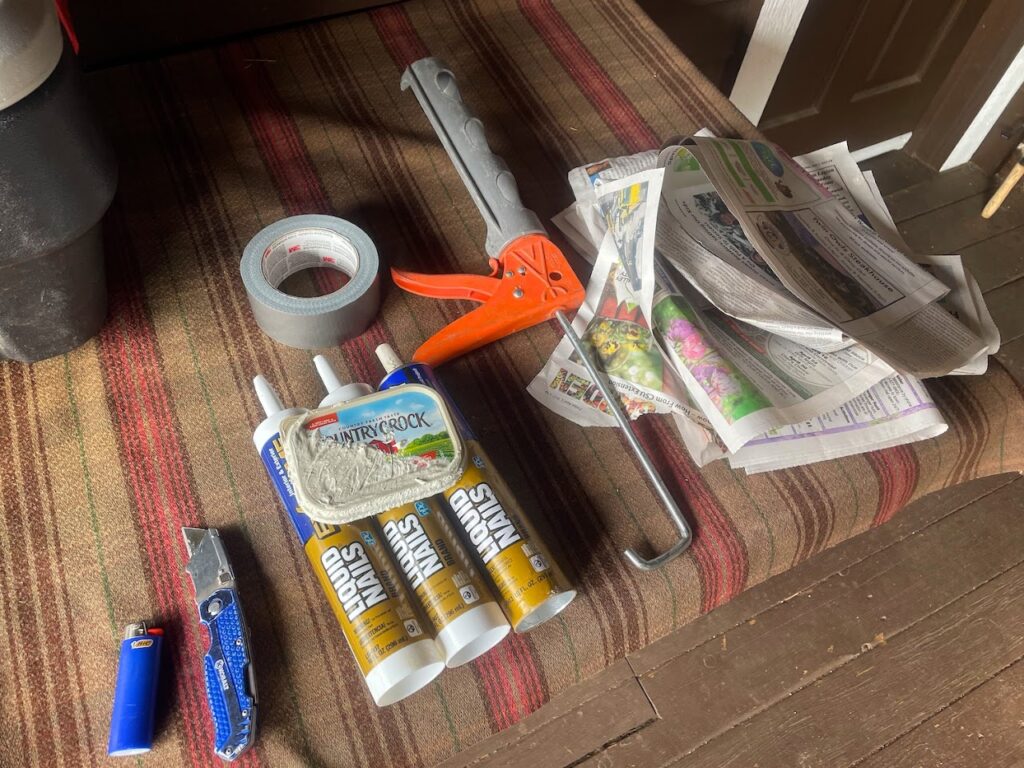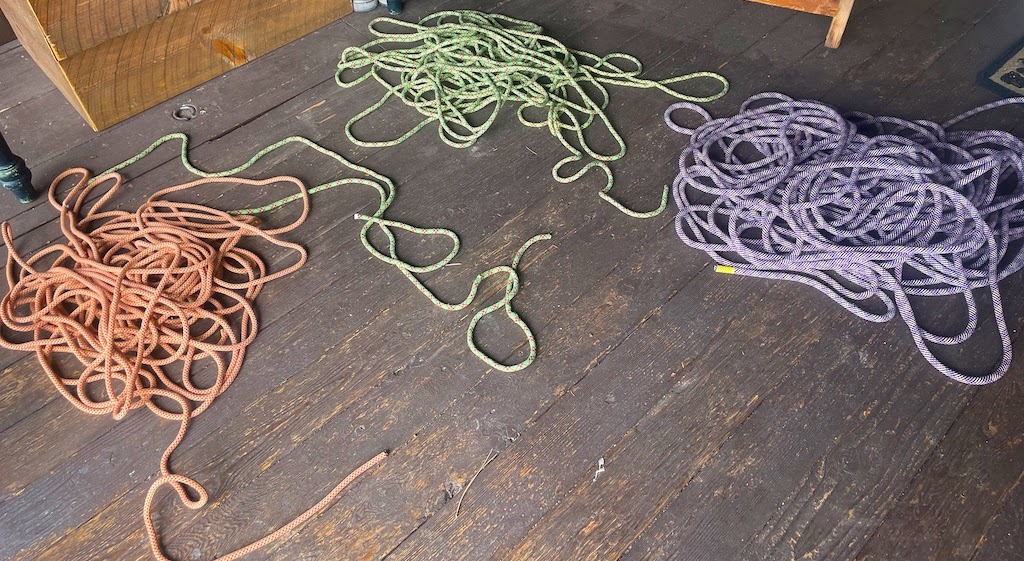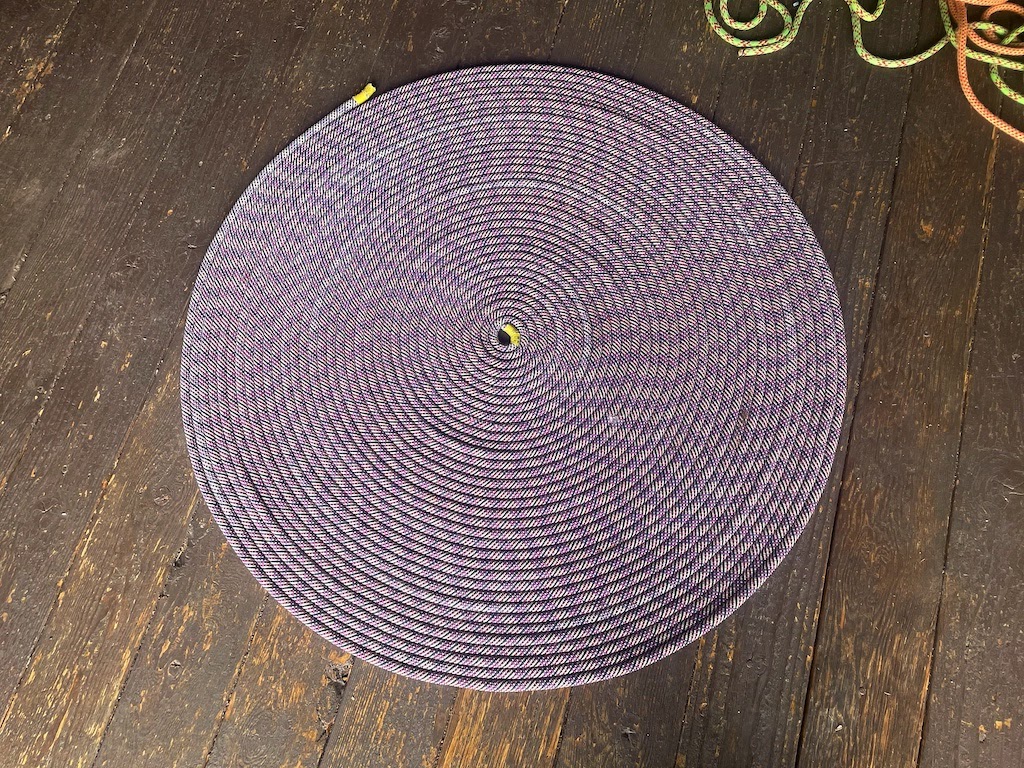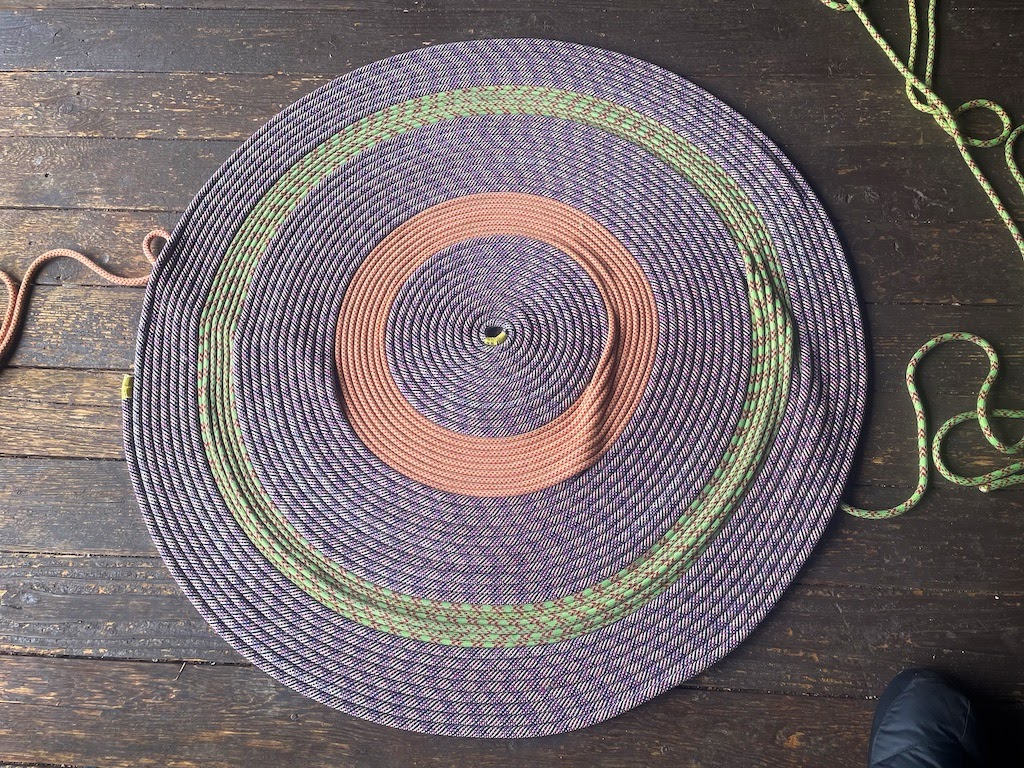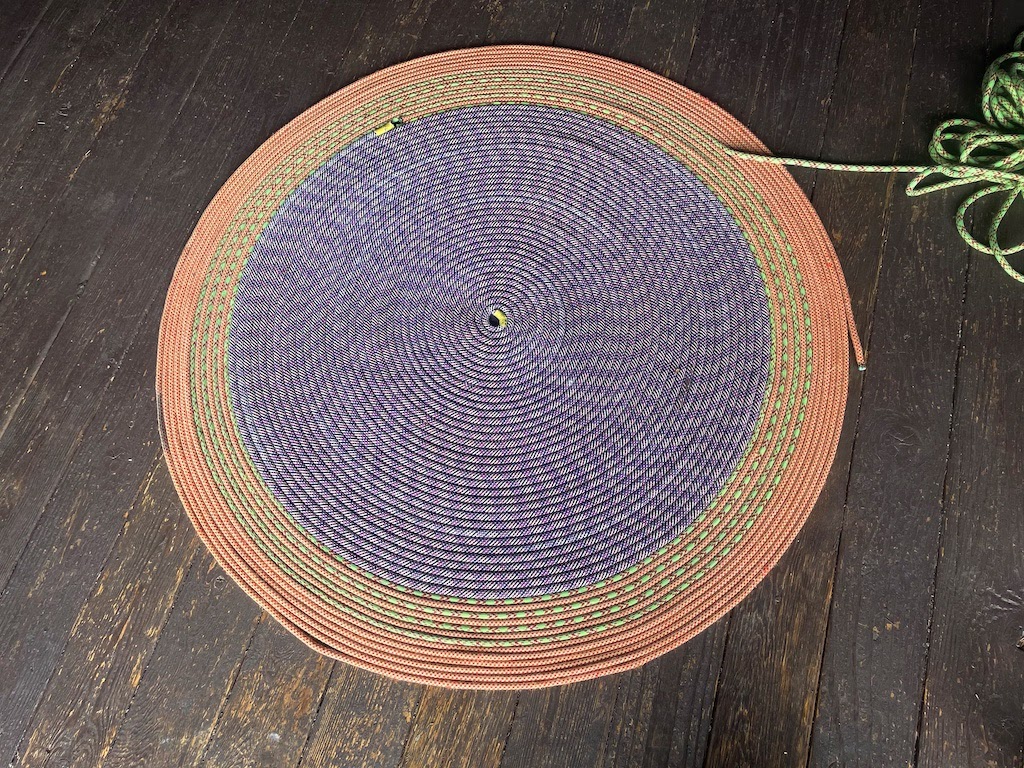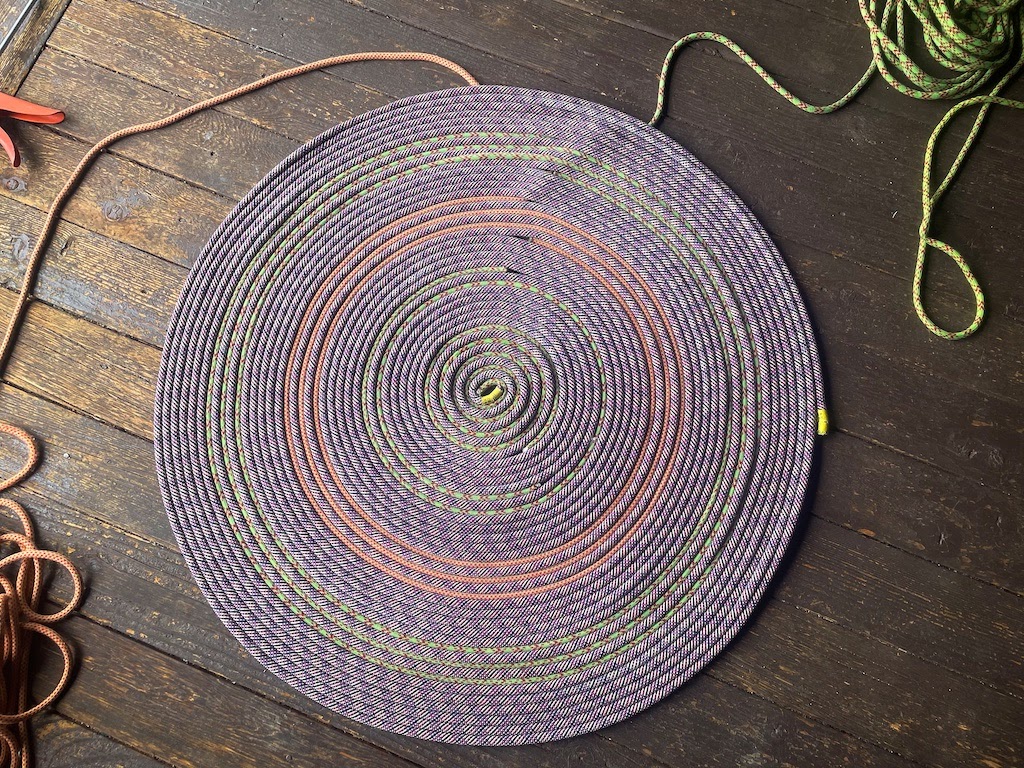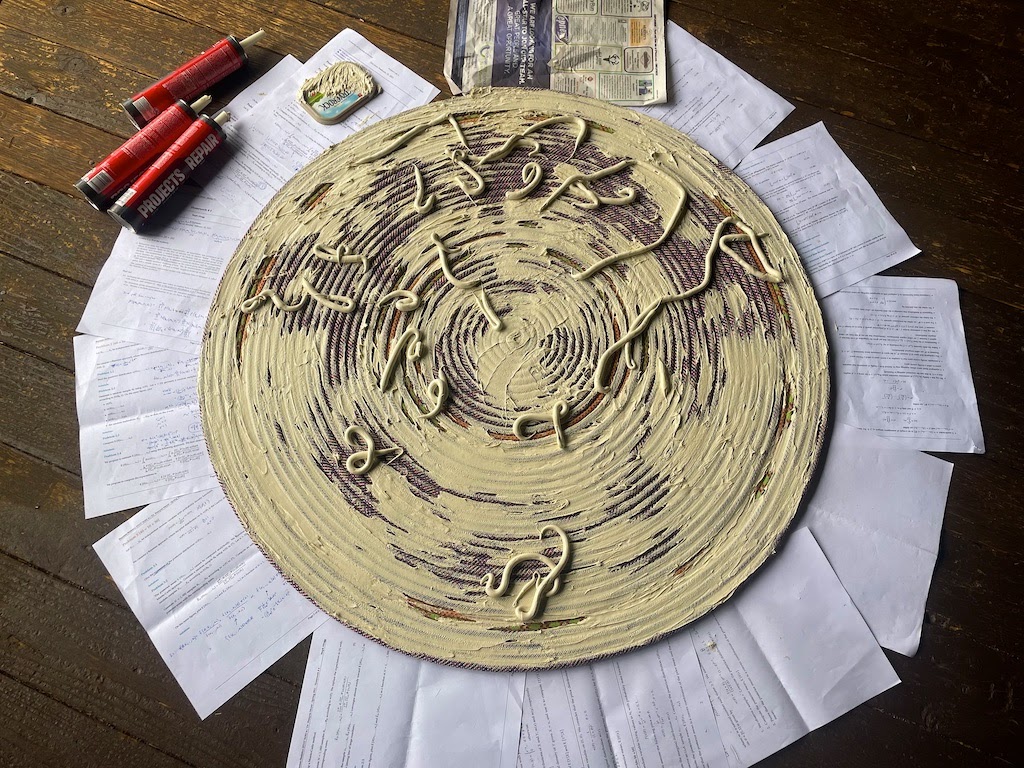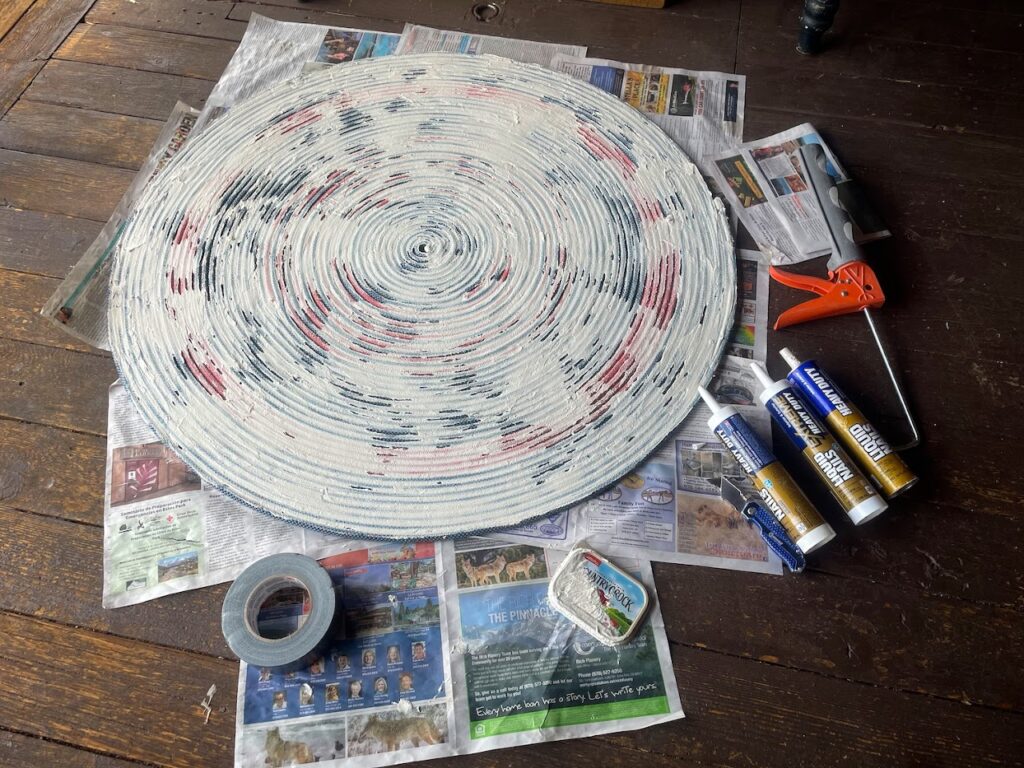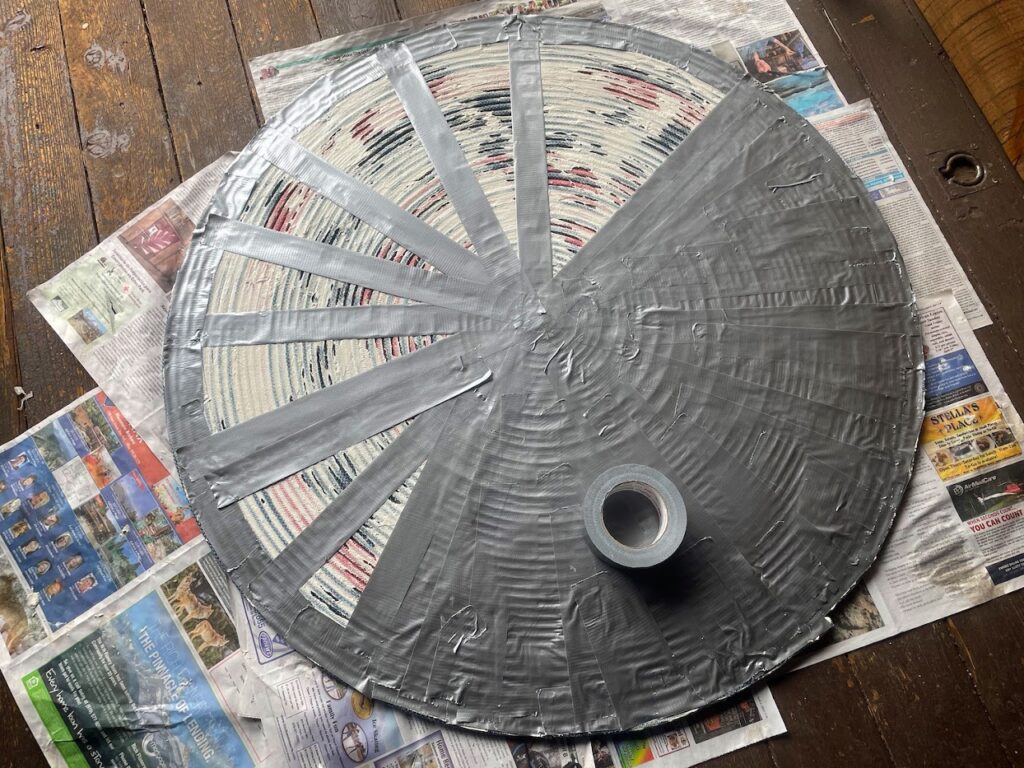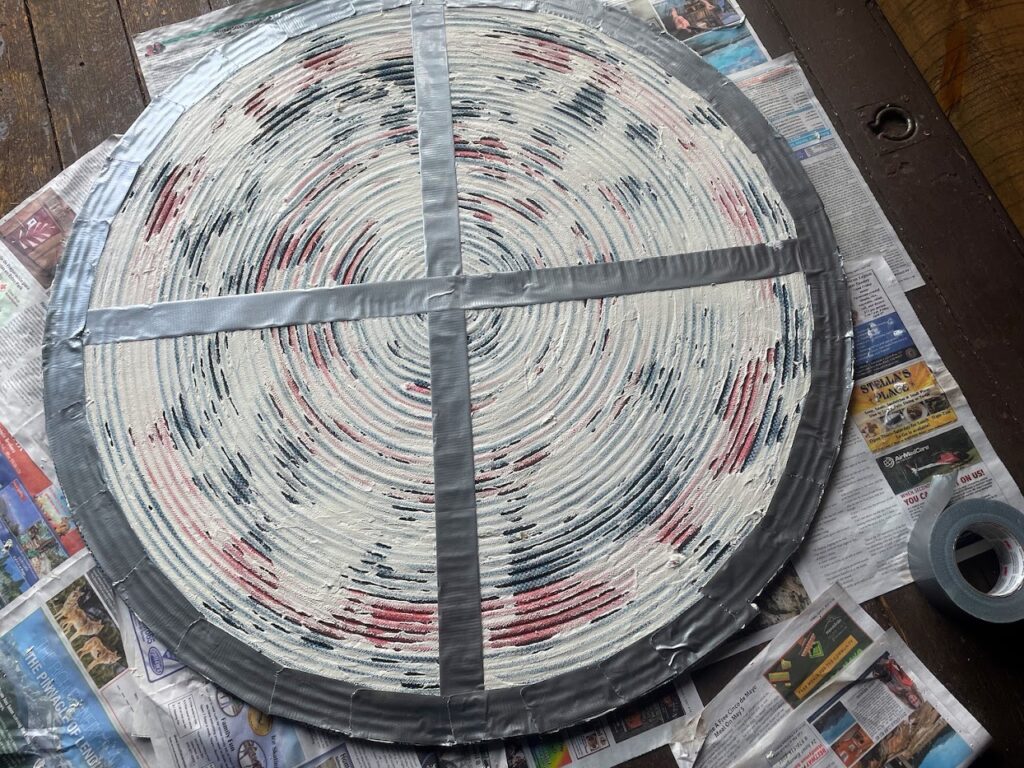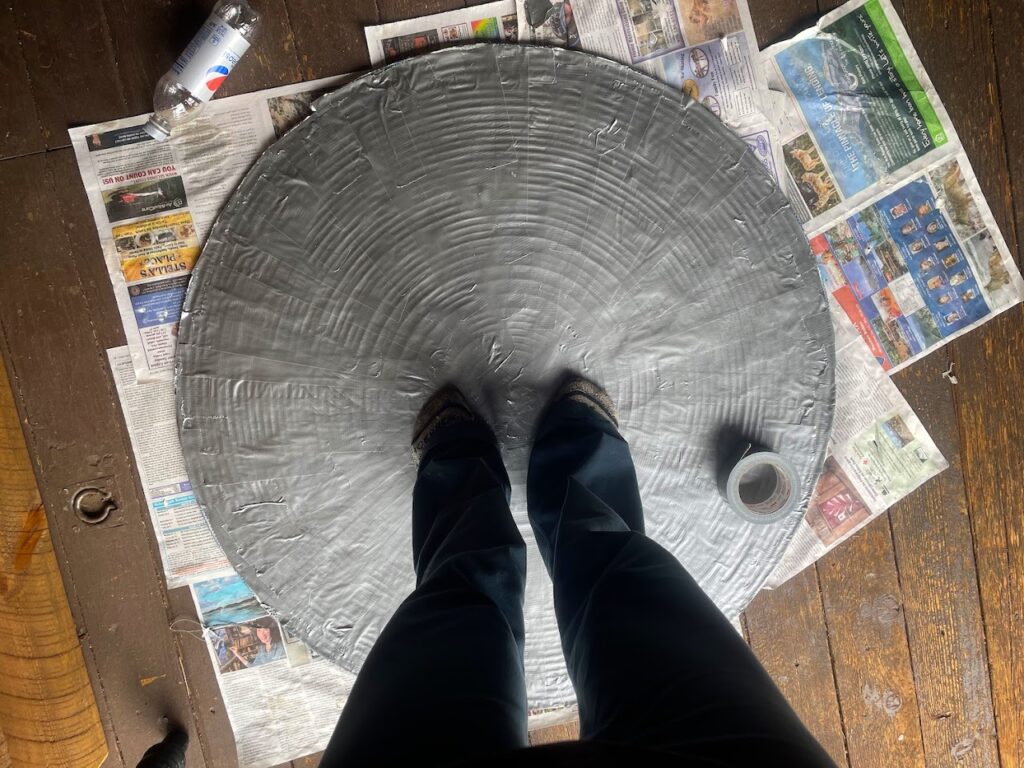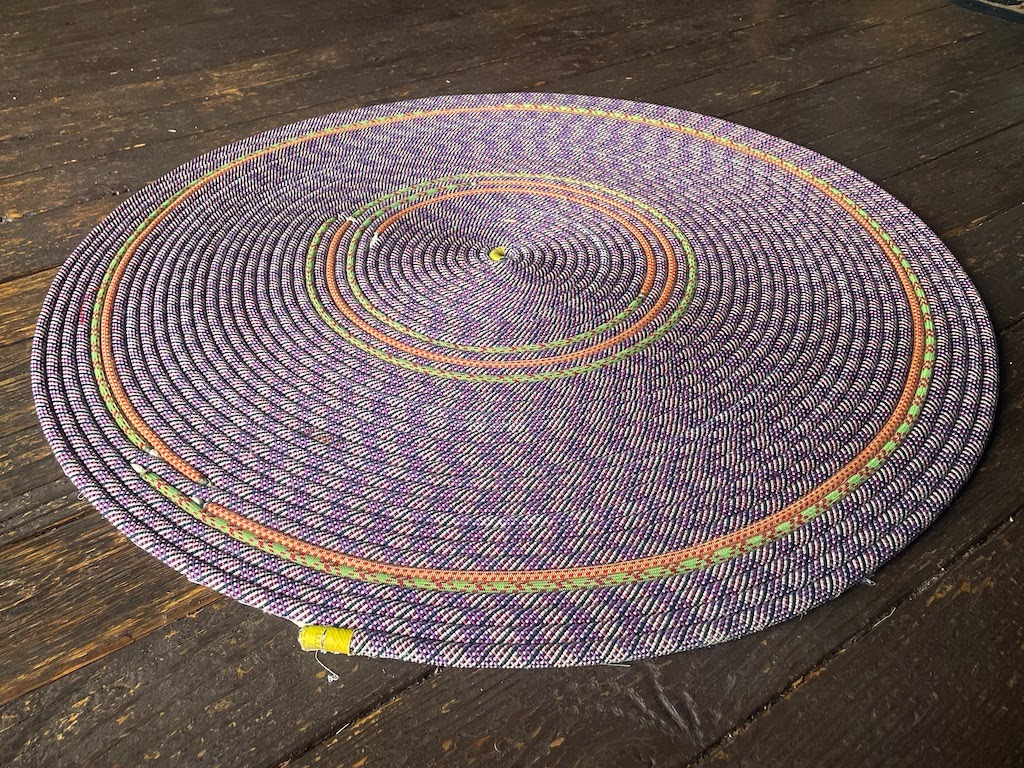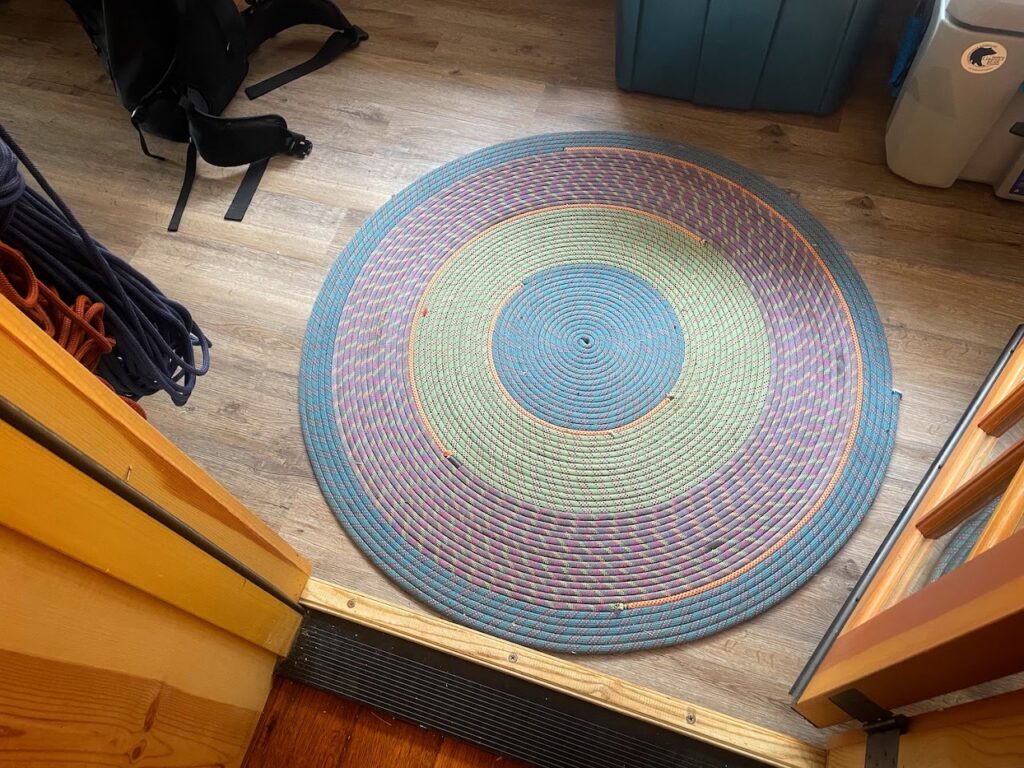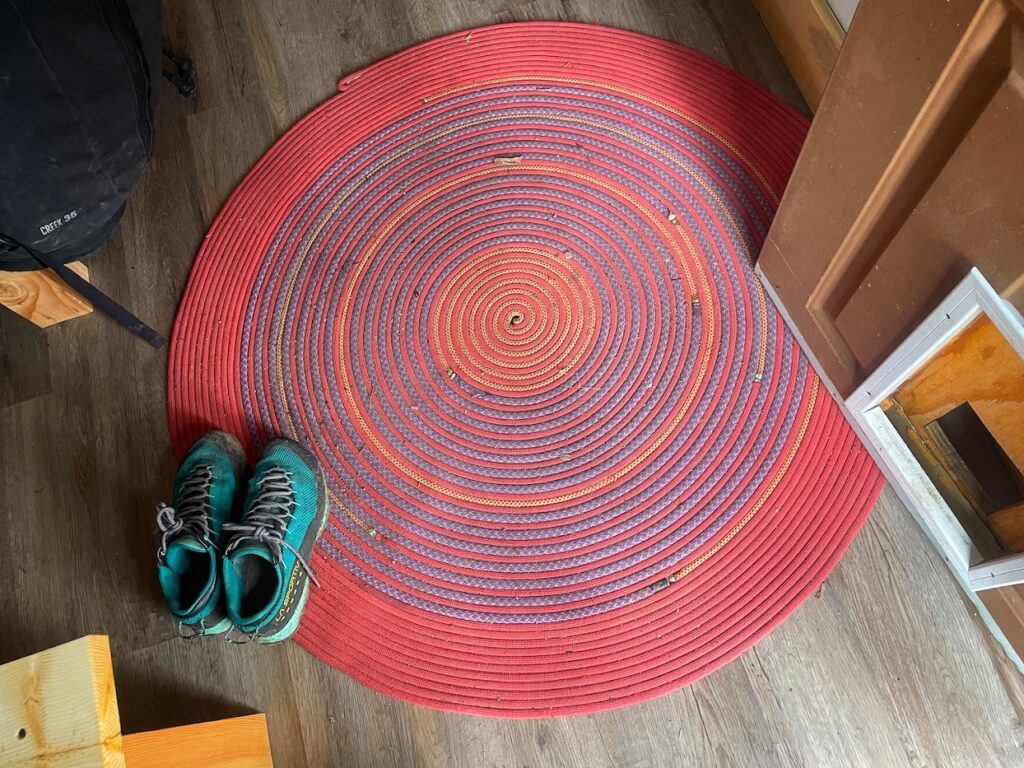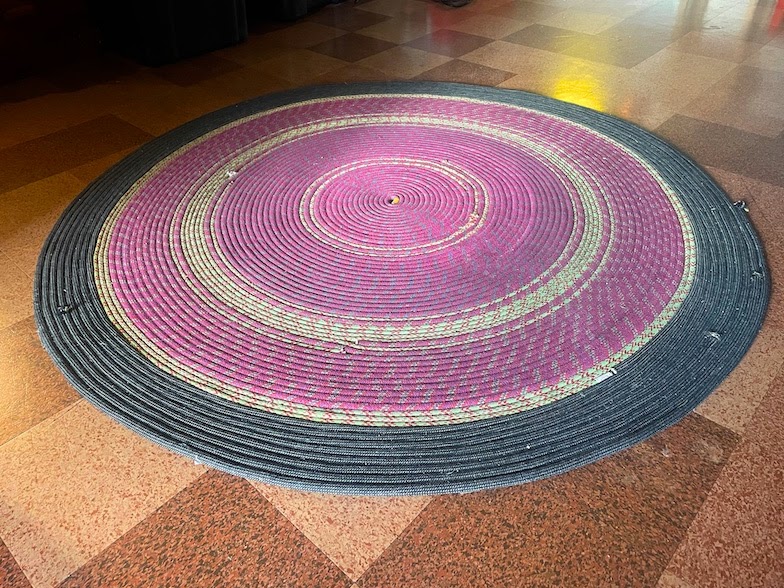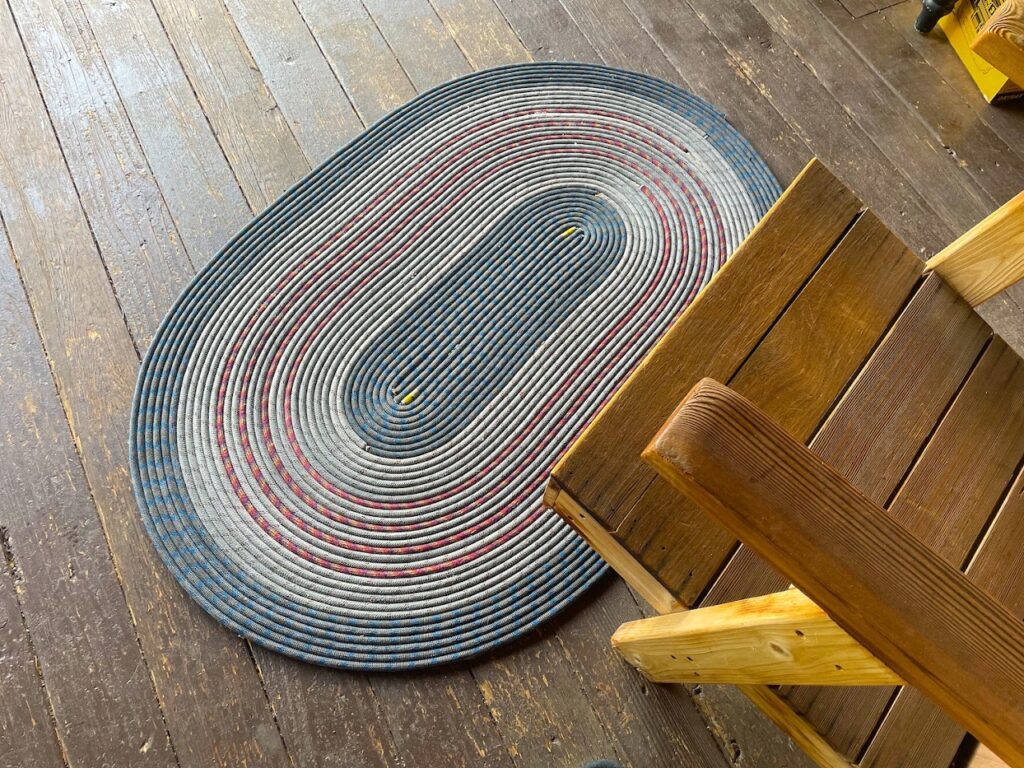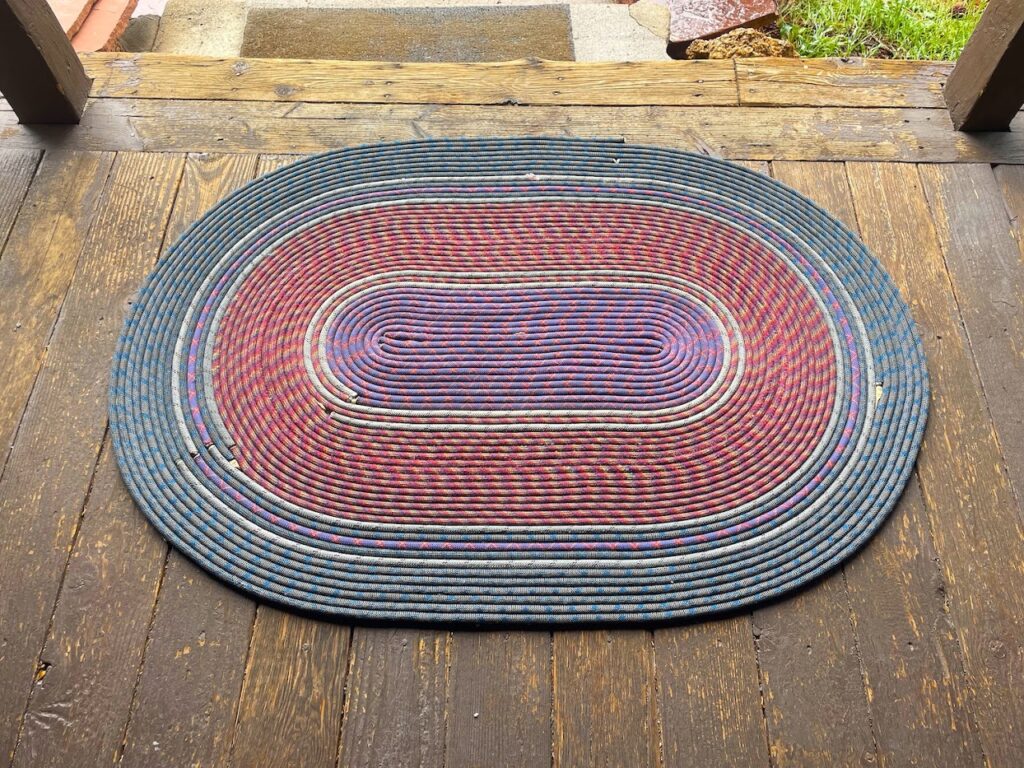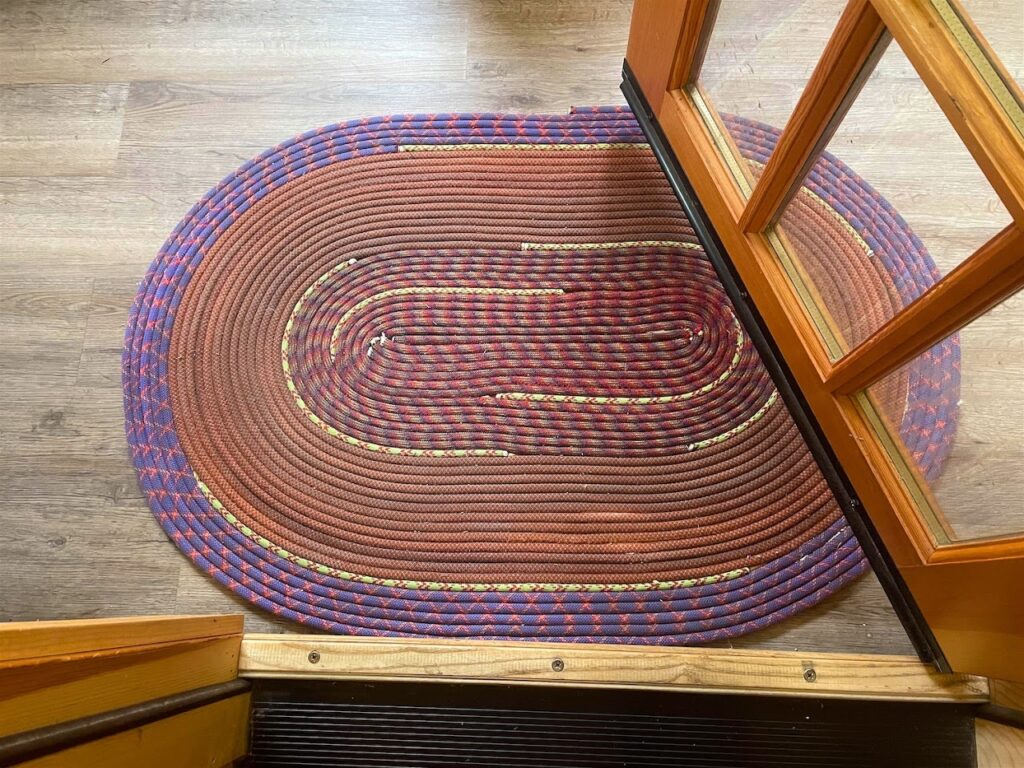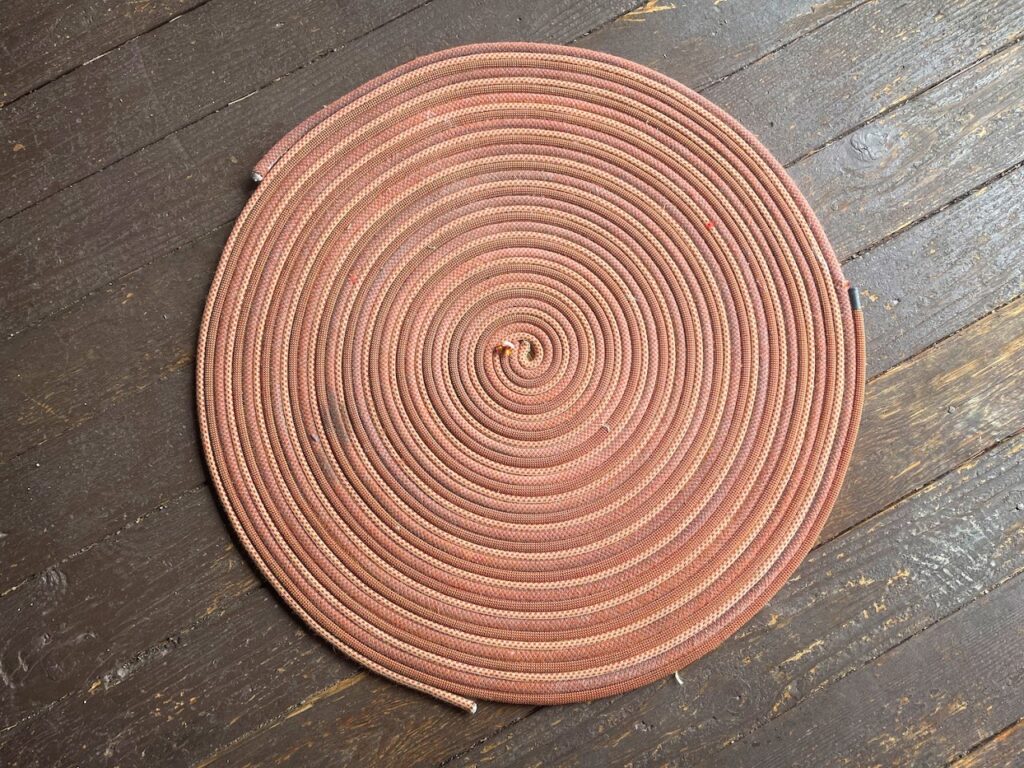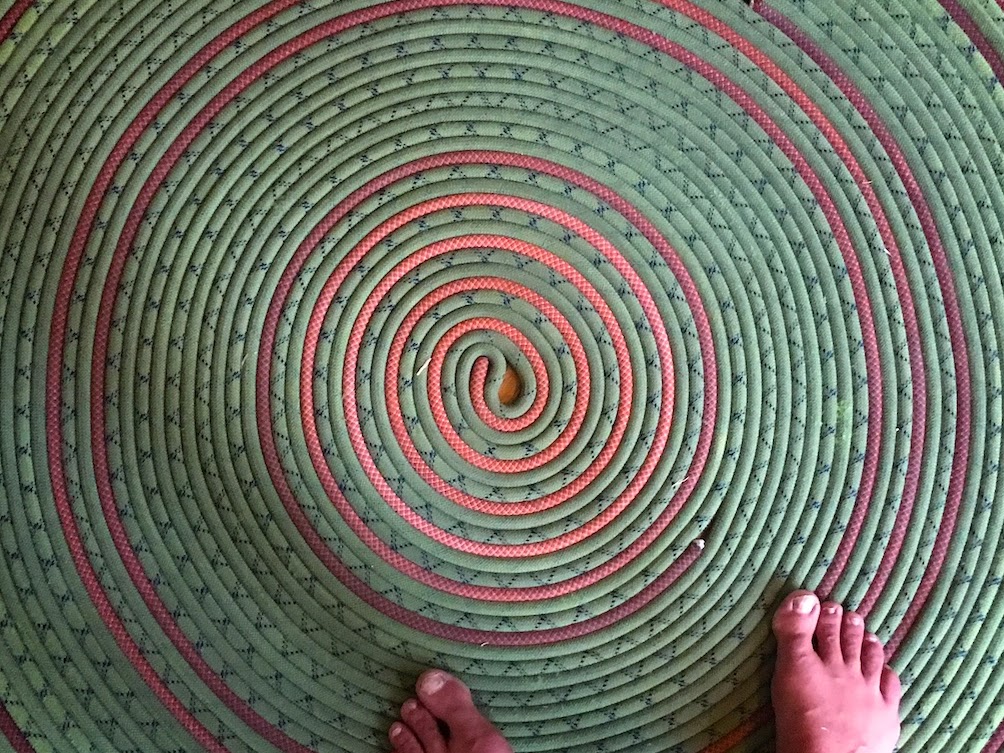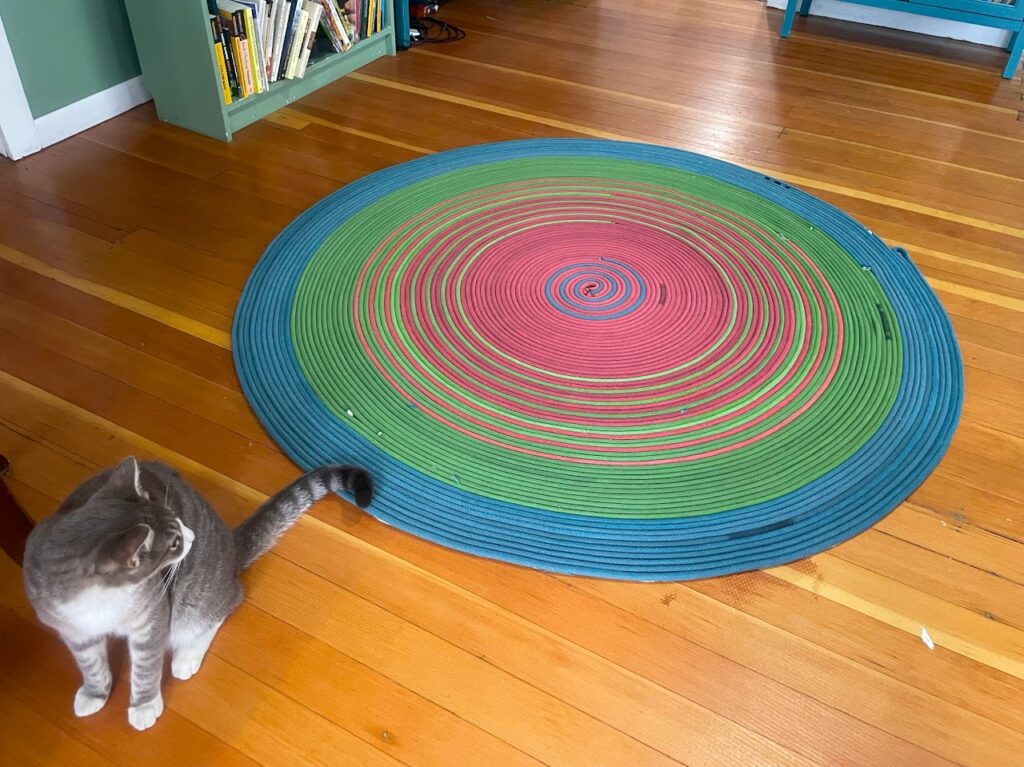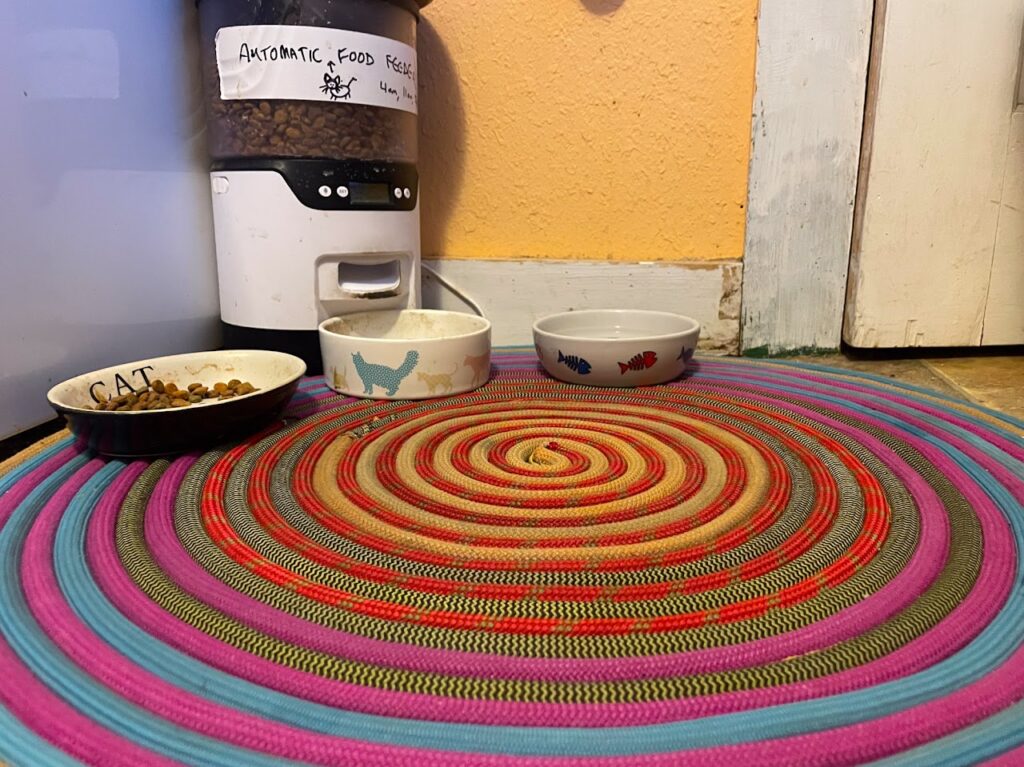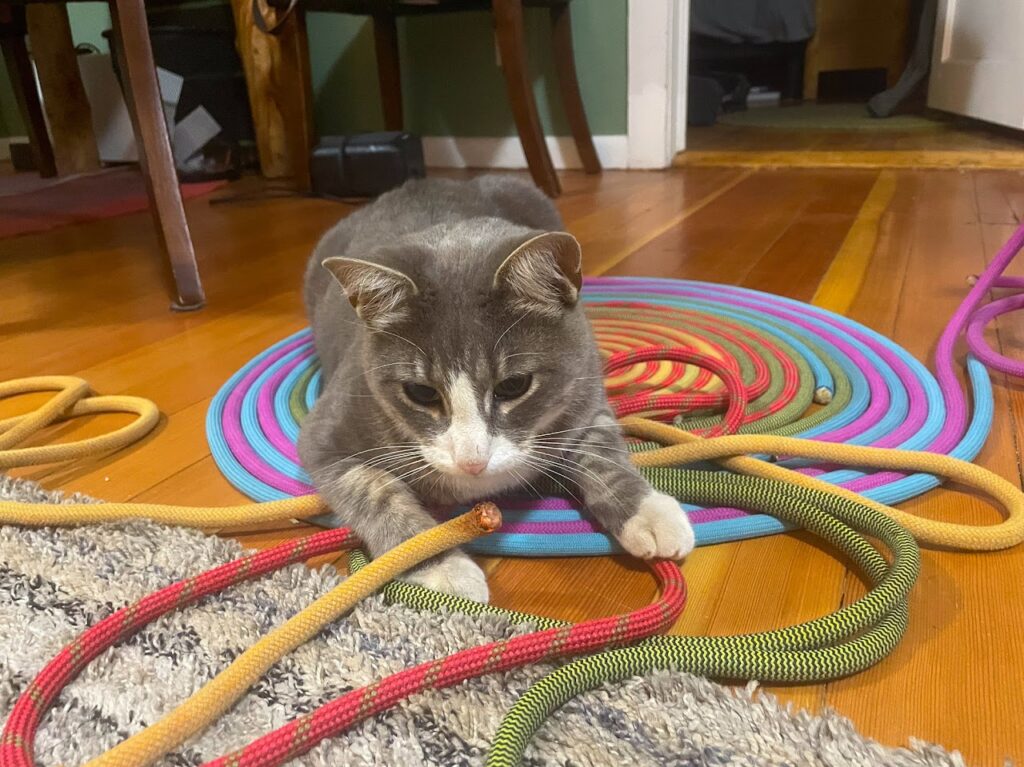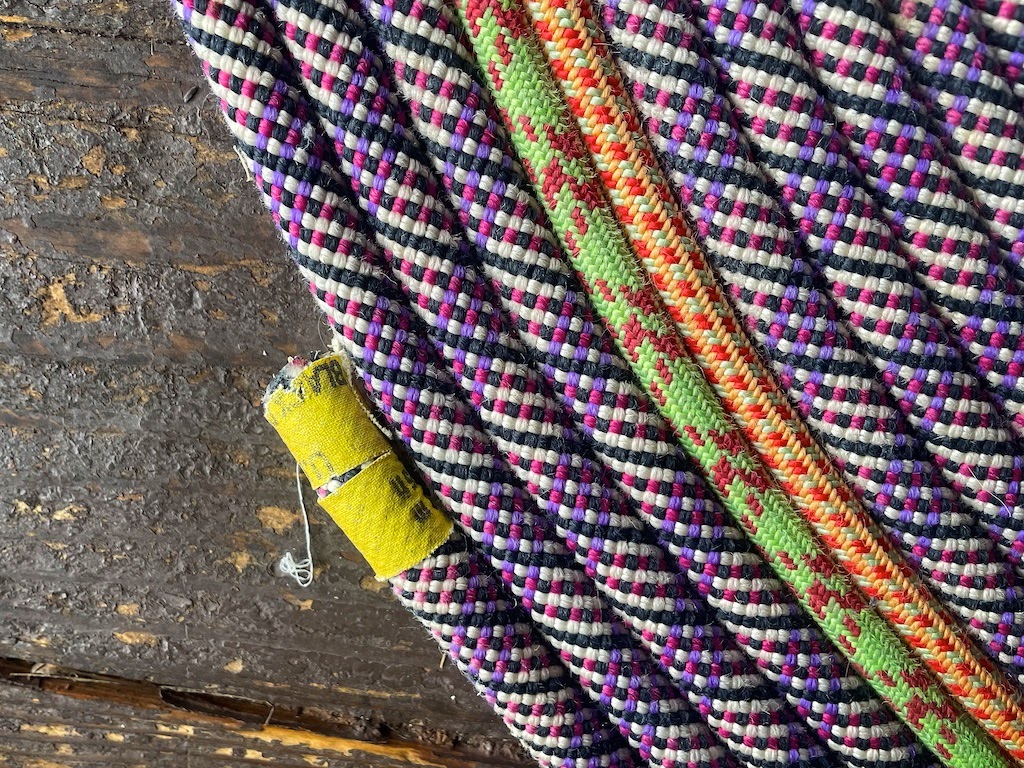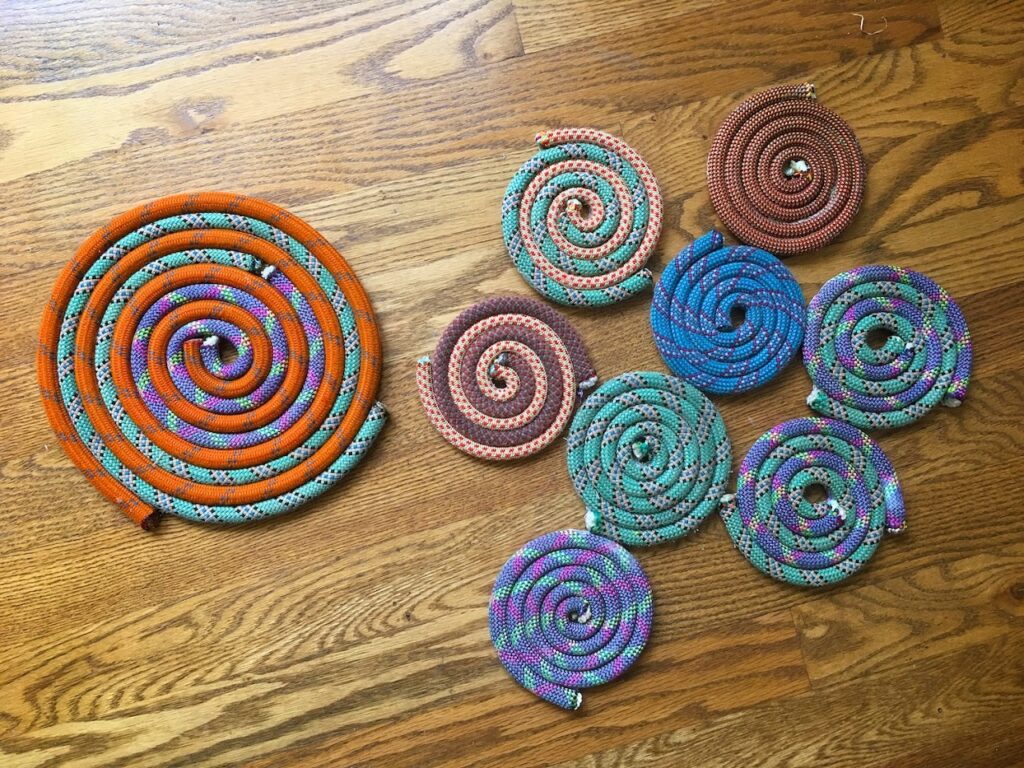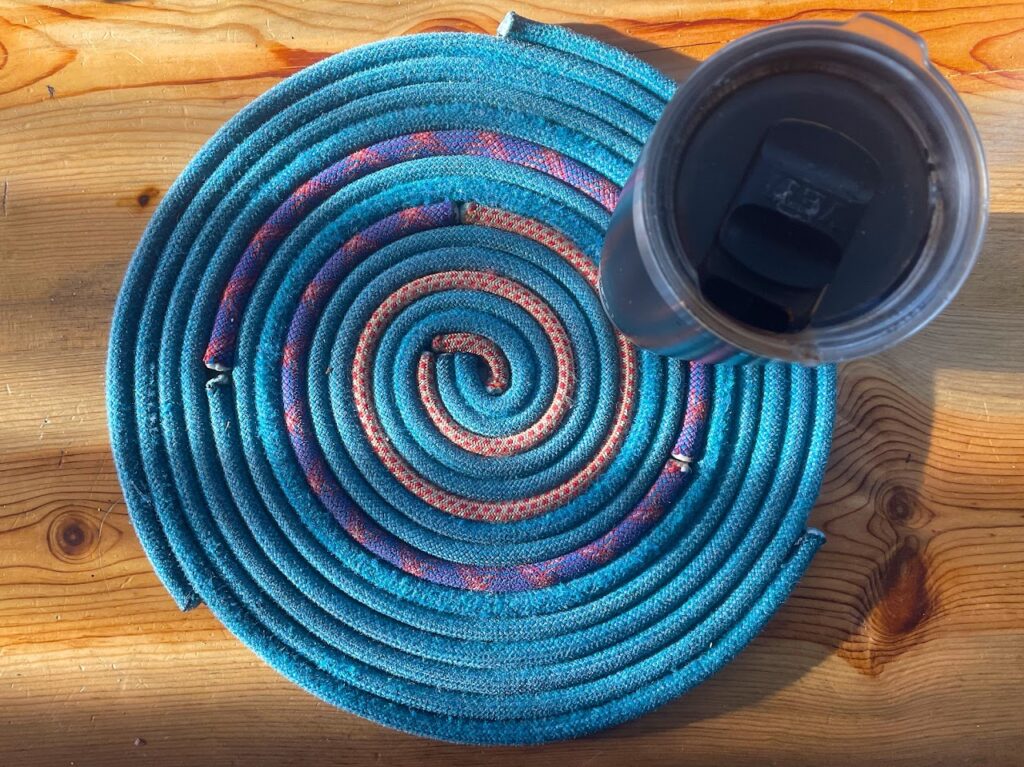Intro
This page gives step-by-step instructions of how to make a spiral-style rope rug from your old climbing ropes. There are also some photos of examples of rope rugs I have created. This is my favorite way to retire a climbing rope.
Materials
- Old rope or ropes (60 m of rope will make a rope rug that is approximately 3 feet in diameter, but I usually use a couple of rope colors and make a slightly bigger and prettier rug; also, I've created rugs where the ropes have different diameters and that seems to be okay)
- Some sort of adhesive, like Liquid Nails (3 tubes for a 60m rope; clear adhesive may be best in case any leaks through the cracks, but I've always used white adhesive)
- Caulking gun (to apply adhesive)
- Duct tape (large roll for a rug made with a 60m rope)
- Knife (to cut rope or adhesive container tips)
- Lighter (for burning rope ends if you use more than one rope)
- Newspaper (to protect surface below rug when using adhesive)
- Something to spread liquid nails with (for example, a plastic container top you'll throw away works just fine)
